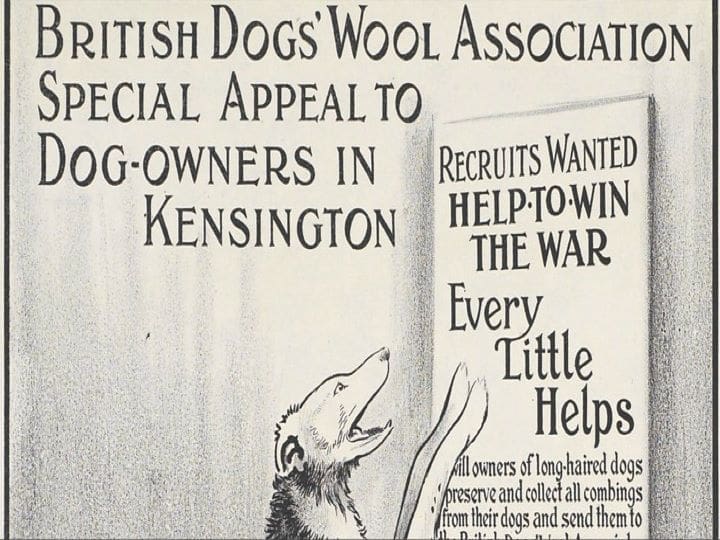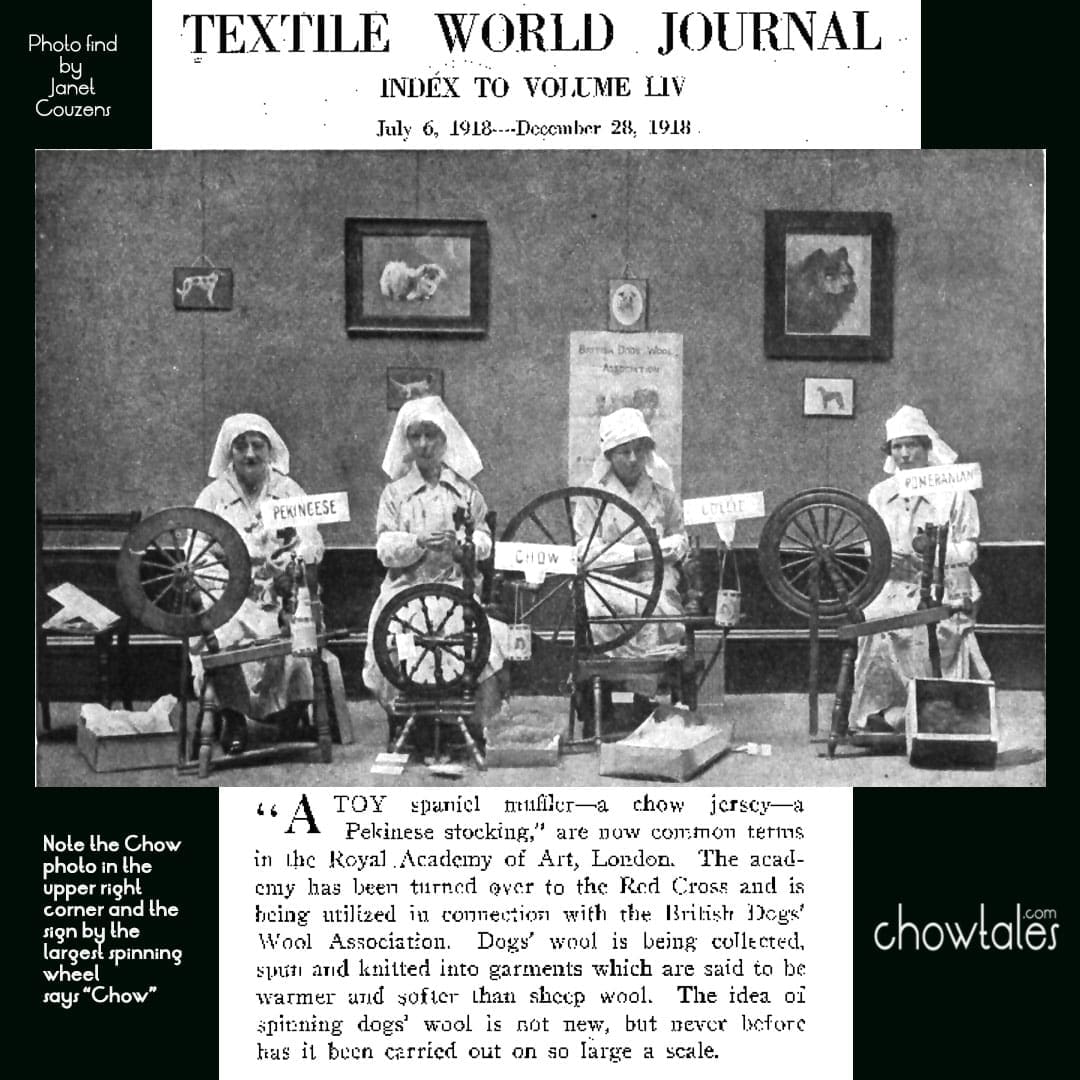Thank you Janet Couzens for bringing the photograph in the above collage I made to my attention as I already had the article and video (below) and now we have a priceless image to illustrate this unique war effort of using Chow and other dog wool to help provide warm and insulating clothing for the soldiers . You can see in the photo the Chow photo on the wall, as well as the word CHOW on the largest spinning wheel in the center

BELOW FIND A WONDERFUL ARTICLE ABOUT THE DOG WOOL EFFORT
The British Red Cross and Order of St. John Central Workrooms were housed at Burlington House, home of the Royal Academy during the war. Taking over seven of its galleries, the headquarters accommodated over four years of war, more than twelve hundred voluntary workers, none giving less than four half days weekly. These workers, sewing to a standard pattern, produced an incredible 73,216 garments and 700,102 bandages for distribution to the sick and wounded. Employees of neighbouring firms would meet at the workrooms in the evening to knit ‘comforts’ for the troops, there was a coordinated registration of home workers and sewing patterns were even designed, reproduced and sold via Burlington House.
When the difficulty of obtaining wool became a serious problem, a new industry was started at the headquarters – spinning dog’s hair into yarn. The four ladies pictured at their spinning wheels here under the auspices of none other than the British Dog Wool Association, are working with hair from Pekingese, Chow, collie and Pomeranian breeds. We can also identify a Borzoi in the pictures displayed on the back wall – presumably another breed prized for its soft, silky hair.
How the recipients felt about receiving a scarf of pure Pomeranian, or socks made from Samoyed wool, we can only guess at – and hope they didn’t have an allergy to dog hair! SOURCE



Leave a Reply